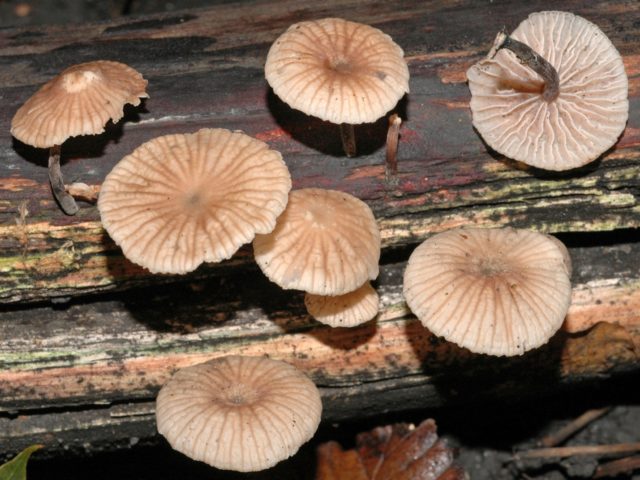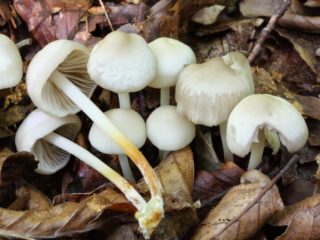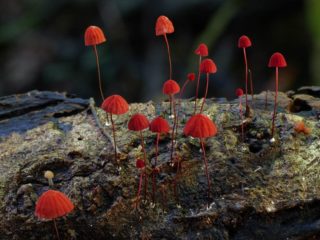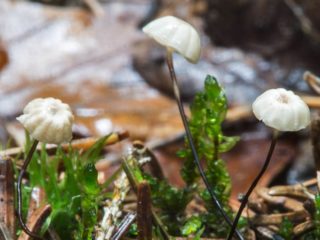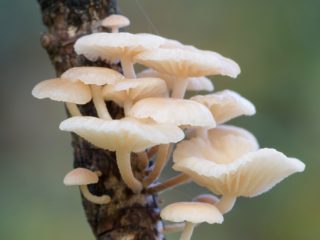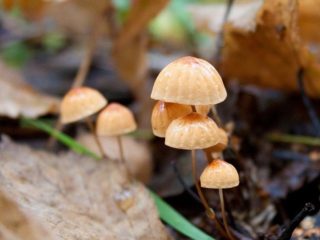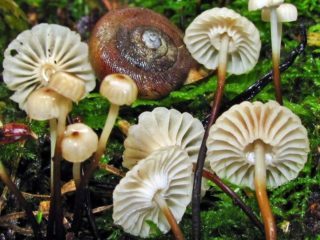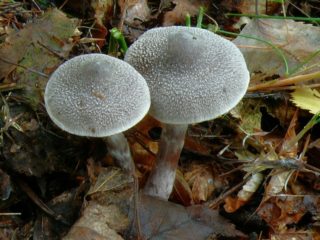Content
Saprotrophic mushrooms, to which stinking fungus belongs, provide an invaluable service to the plant world - they utilize dead wood. If they did not exist, the process of cellulose decomposition would take much longer, and forests would long ago turn into huge piles of slowly rotting trees. The stinking bug is widespread in the world; it can also be found in Russia.
What does a stinking bug look like?
The species in question has another name, under which it can be found in the specialized literature - stinking micromphale. Belongs to the lamellar mushrooms of the Negniuchnikov genus.
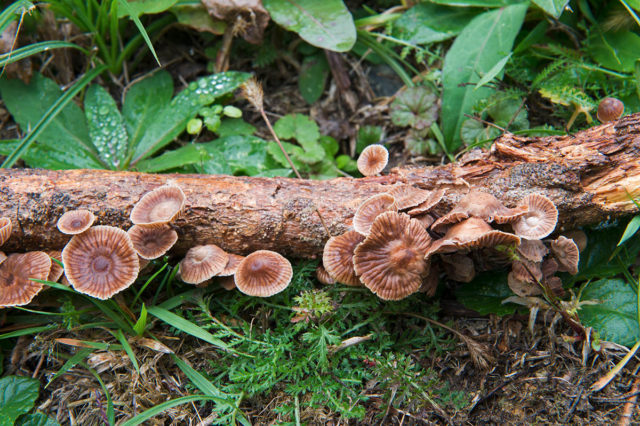
Stinking rotten grows on dead wood
It is fairly easy to recognize when found in the wild.
Description of the cap
The cap of the micromphale stinking rarely reaches a diameter of 3 cm, its usual size is 1.5-2 cm. At a young age it is hemispherical, and as it grows it becomes more and more flat and prostrate. The cap of an adult mushroom is wrinkled, slightly depressed in the central region, and has wavy edges. It can be yellowish, beige, ocher or light brown in various shades, with radial stripes painted in darker tones.
On the reverse side of the cap there are a few plates. They are quite dense, wavy, sparse, and often grow together and with the stem. In young specimens they are beige, gradually darken and become brown-ocher.
Description of the leg
The leg of the stinking bug is thin, straight or curved, hollow inside. Its dimensions do not exceed 3 cm in length and 0.3 cm in diameter. At the junction with the cap there is a flattened thickening. The leg is brown, light on top, darker below, sometimes almost black, velvety to the touch.
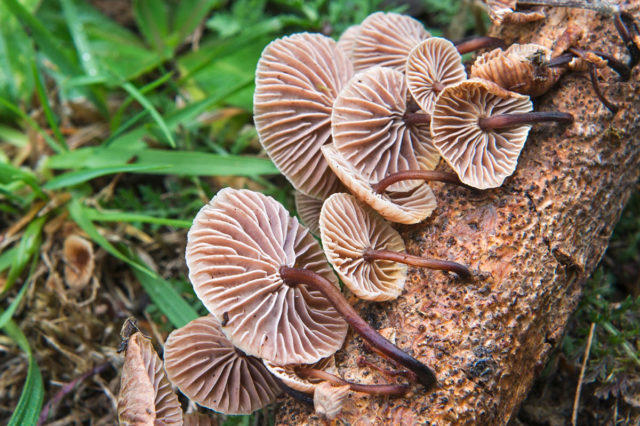
The flesh of the stinking cap is yellow and brittle. At the leg it is brownish, more dense.
Where and how does it grow
You can meet the stinking moth in the southern regions of Russia. There it grows in deciduous, less often in mixed forests. It usually grows on old dead wood of deciduous trees, on branches, bark, in large and small groups, often merging with each other. The first specimens appear in mid-summer, and active fruiting ends in late autumn.
Is the mushroom edible or not?
The stinking mushroom is not an edible mushroom. It is not eaten as food not only because of its specific unpleasant odor, but also because of the presence of toxins in it. It is not fatally poisonous, but if ingested, it can cause serious food poisoning.

In case of mushroom poisoning, it is necessary to urgently take the victim to the hospital
The main symptoms of poisoning are stomach upset, vomiting, nausea, diarrhea, dizziness, weakness.
Doubles and their differences
Thanks to the unpleasant putrid aroma that stinking micromphale emits, it is quite difficult to confuse it with any mushroom, much less an edible one. A similar species is another mushroom from the same family, the twig-like fungus, but it does not have the same smell and is colored white and sometimes light pink.
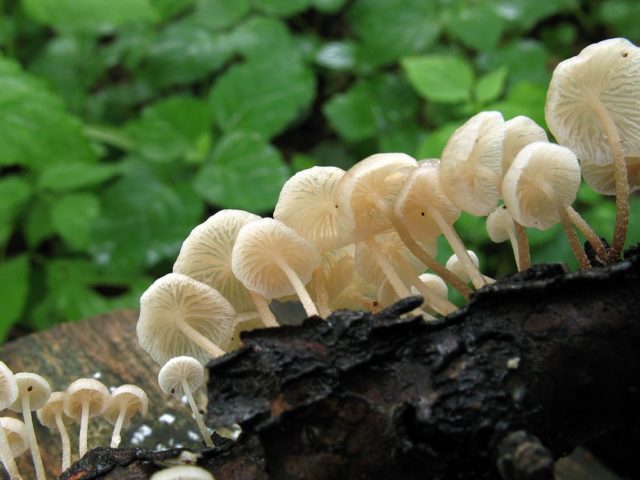
The twig beetle resembles the stinking micromphale, but differs in color and smell
The leg of the twig's rotten grass is white at the top and darker at the bottom. Along its entire length there are numerous small growths, which make it look as if it had been sprinkled with something white. This species, unlike the stinking micromphale, is not toxic, although it is not eaten.
A short video about one of the representatives of the Negniuchnikov family, the meadow Negniuchnikov, can be viewed at the link:
Conclusion
The stinking mushroom is one of the many representatives of the huge mushroom kingdom. It is not widely distributed, is not eaten, and is also small in size, so many lovers of quiet hunting simply do not notice it. However, all such mushrooms perform a very important function - they decompose dead wood, cleaning the forest and promoting the growth of other plants.
